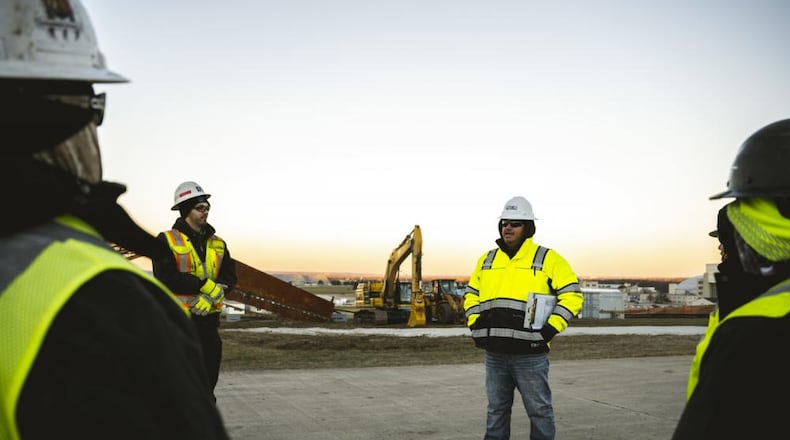In all, the issue affected 175,000 service members at 24 installations, according to the Washington D.C-based Environmental Working Group.
Jared Hayes, a policy analyst for the group, said the DOD found, at least at one time, levels of the chemicals above older EPA standards in Wright-Patterson drinking water “from the tap.”
Since then, the EPA has begun to promulgate more stringent standards.
PFAS is short for per- and polyfluoroalkyl substances, which were once used in nonstick frying pans, water-repellent sports gear, stain-resistant rugs, firefighting foam and elsewhere. The substance was voluntarily phased out in the U.S., but it remains in some products and in the environment.
On Wright-Patterson, the substance had been found in firefighting foam. The Air Force in recent years has replaced legacy firefighting foam in emergency vehicles and hangar fire prevention systems with a formula that meets U.S. EPA guidelines, a base spokeswoman told this newspaper this year.
In an interview Wednesday, Hayes said he has not seen more recent testing of Wright-Patterson’s water.
A spokeswoman at Wright-Patterson’s 88th Air Base Wing said responses to the report may be possible Friday.
“The Department of Defense prioritizes efforts to protect our military and civilian workforce, families who live on our installations, as well as residents of the surrounding communities, by addressing risks to human health and the environment caused by our activities,” the DOD said in a statement to the Dayton Daily News on Wednesday.
“Specific to per- and polyfluoroalkyl substances (PFAS) releases from our activities, DoD has prioritized and addressed all known drinking water exposures over the EPA 2016 health advisories on our installations and in the surrounding communities in which we serve,” the department added.
The EPA in June this year issued nonbinding health advisories that set health risk thresholds for PFOA and PFOS in drinking water near zero — no more than 0.02 parts per trillion, replacing 2016 guidelines that had set them at 70 parts per trillion.
In March 2022, Raymond Baker, environmental branch chief at Wright-Patterson, said PFOA chemicals were found in amounts above EPA-recommended lifetime health advisory levels at most of 16 base sites where Wright-Patterson environmental engineers were investigating the presence of forever chemicals.
However, those levels were found in groundwater or surface water, not drinking water, Baker also said.
“Right now there are no unsafe levels of PFAS in treated drinking water here at Wright-Patterson Air Force Base or the city of Dayton,” Baker said in March.
The issue of the chemicals and their presence near local water sources has been long been of concern to Dayton, with three area cities pursuing lawsuits against the government and against manufacturers over contamination of the substances.
Earlier this month, the city of Bellbrook became the latest Dayton-area city to file suit against more than 30 businesses, many of which are chemical manufacturers, alleging PFAS contamination of its water sources.
Bellbrook is seeking damages for the remediation, treatment, and monitoring of “ongoing contamination of its water resources,” per the filing, alleging that “actions and/or inactions” of the defendants have led to harmful “forever chemicals” being released into the city’s groundwater.
Earlier, the city of Fairborn filed a similar suit against 32 chemical manufacturers for allegedly contaminating one of the city’s back-up wells with the chemicals. And in the spring of 2021, Dayton filed its own $300 million lawsuit against Wright-Patterson Air Force Base over water contamination.
The city of Dayton’s lawsuit against Wright-Patterson and the DOD was moved to a federal court in South Carolina in August 2021. There, the docket has shown no case activity since then, as of Thursday.
About the Author


